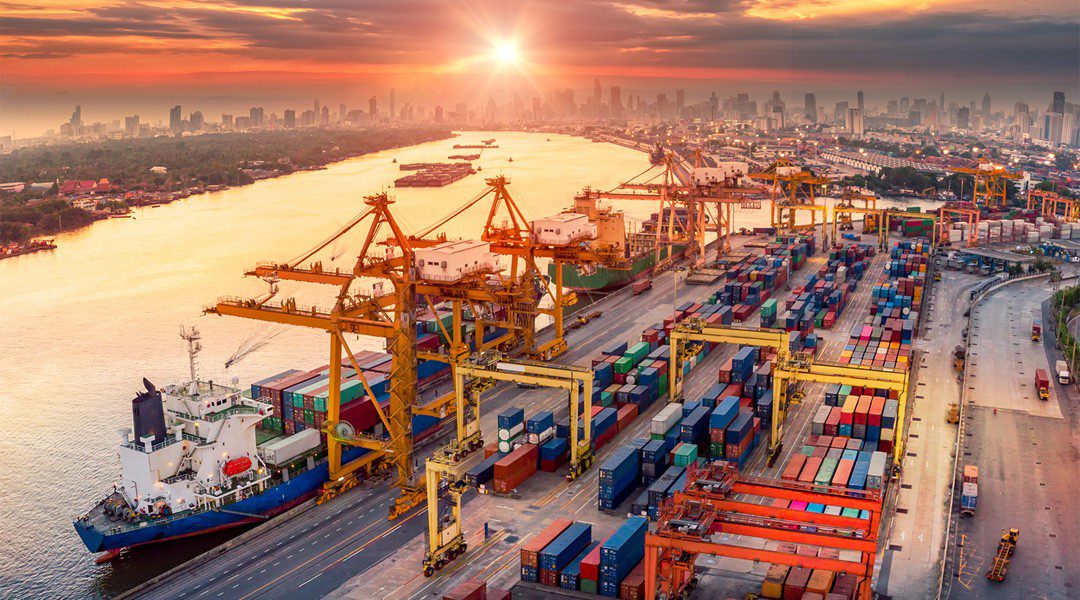Spot rates have seen significant increases in recent weeks leading to speculation as to the impact on inflation.
Looking at the data, the current freight rate spikes in containers should not give cause for concern.
Let us take the spot rates as a starting point. Very roughly the Asia to Europe market has seen an increase of 4100 /FFE since the outset of the Red Sea crisis.
This sounds like a lot, and for shippers who has to pay it, it is indeed a substantial amount
Lars Jensen
This sounds like a lot, and for shippers who has to pay it, it is indeed a substantial amount. But some context then becomes necessary.
Comparing spot rate developments and the development in the much more comprehensive CTS index which also includes the spot rates adds a dampener on it.
During the pandemic, the CTS index increased substantially less than the spot rate showing that certainly not all shippers were paying the extremes of the spot market.
The development of spot rates in the past six weeks follows the early pandemic development quite well, and hence it should be assumed that the link between the spot and contract exposure also develops in the same way.
The next step is to place the added freight rates into context.
If we assume the current rate level holds up for a whole year – which it likely will not – then we can calculate the additional sum paid by the European importers.
Lars Jensen
We can then for example compare this added cost to the value of the European merchandize imports over a year. In that case we find that the added cost amounts to slightly less than 0.3% of the value of the goods imported.
But we should also keep in mind that spot rates always increase seasonally at this point in time leading up to Chinese New Year. If we look at the period from 2013-2020 i.e., before any pandemic impact, we find that spot rates from Asia to Europe increase by an average of roughly 850 /FFE.
This part of the current increase should therefore not be seen as inflationary at all and should be kept out of the calculation. This lowers the inflationary effect to 0.23%.
But in 2016 rate levels were extremely low and the period leading up to Chinese New Year were used by the carriers to try to restore profitability – not unlike the situation in the market just before the Red Sea Crisis.
At that point in time spot rates increased 1550 /FFE. If this is taken as a baseline normal market development in the situation the market was in just before the Red Sea crisis, it means that the inflationary effect from Asia-Europa cargo from the Red Sea driven increases is just 0.18%.
Several comments need to be made at this point. Not all cargo types are equally impacted.
Large bulky items with relatively low retail value are being impacted very hard. Small valuable retail items are barely affected at all.
The inflationary impact above is seen on the market as a whole, and that of course does not preclude specific individual goods from experiencing an inflationary impact irrespective of the total average.
It can of course nor be precluded another calamity might cause rates to spike further
Lars Jensen
The inflationary estimate above is solely based on the freight rate. Any possible add-on costs related to land-side logistics problems, added warehousing costs or costs of stock-outs are not included.
It can of course nor be precluded another calamity might cause rates to spike further, but that would not be a baseline outlook.
Instead we should expect spot rates to abate somewhat on especially Asia-Europe whereas rates on some of the other trades will begin to increase as the result of an arbitrage between trades in terms of capacity deployment.
But how come such a big disruption does not lead to a bigger impact?
Herein lies the real message of the global container supply chain: Because moving goods in containers is extremely cheap.
This is what has driven outsourcing for decades – the simple fact that the shipping costs for many commodities are so low that they become dwarfed by other costs such as labor costs.
And this is why the impact of the current crisis appears to be paradoxically low.





